English
Although we try to make our garden a habitat for as many native, insect-friendly flowering plants as possible, in addition it is the home of quite some exotic plants, too, such as hardy figs and bananas, bamboo, a pomegranate tree, as well as cold-tolerant cacti and agaves.
However, I would like to dedicate this post to our 'Oriental paperbush' (Edgeworthia chrysantha), which originated in China and is cultivated in Japan, together with its little guests who visit it mainly at night.
The name of the paperbush comes from the fact that its bast fibres are used to make Japanese paper (washi).
As an early bloomer (from late winter to early spring) and with its nectar secreted in large quantities, it is an important source of food for many insects awakening after winter, which it attracts by its sweet, infatuating scent.
The following pictures, mostly taken at night, show small beetles, moths and lacewings (Chrysoperla carnea), among others, feasting on its sweet excretions (well visible in some of the photos).
Deutsch
Obwohl wir versuchen, unseren Garten zum Lebensraum möglichst vieler heimischer, insektenfreundlicher Blütenpflanzen zu machen, beherbergt er durchaus auch einige exotische Gewächse, wie z. B. winterharte Feigen und Bananen, Bambus, einen Granatapfelbaum sowie kälteunempfindliche Kakteen und Agaven.
Dieses Post möchte ich jedoch unserem ursprünglich aus China stammenden und in Japan angebauten 'Papierbusch' (Edgeworthia chrysantha) samt seinen ihn vor allem nachts aufsuchenden kleinen Gästen widmen.
Der Name des Papierbuschs rührt daher, dass seine Bastfasern zur Herstellung von Japanpapier (washi) verwendet werden.
Als Frühblüher (vom späten Winter bis in den frühen Frühling) stellt er für viele nach dem Winter erwachende Insekten, die er mittels seines süßlich-betörenden Dufts anlockt, mit seinem in großen Mengen abgesonderten Nektar eine wichtige Nahrungsquelle dar.
So zeigen die folgenden, überwiegend nachts geschossenen Bilder, wie sich unter anderem kleine Käfer, Motten und Florfliegen (Chrysoperla carnea) an seinen süßen (auf einigen der Fotos gut erkennbaren) Ausscheidungen laben.
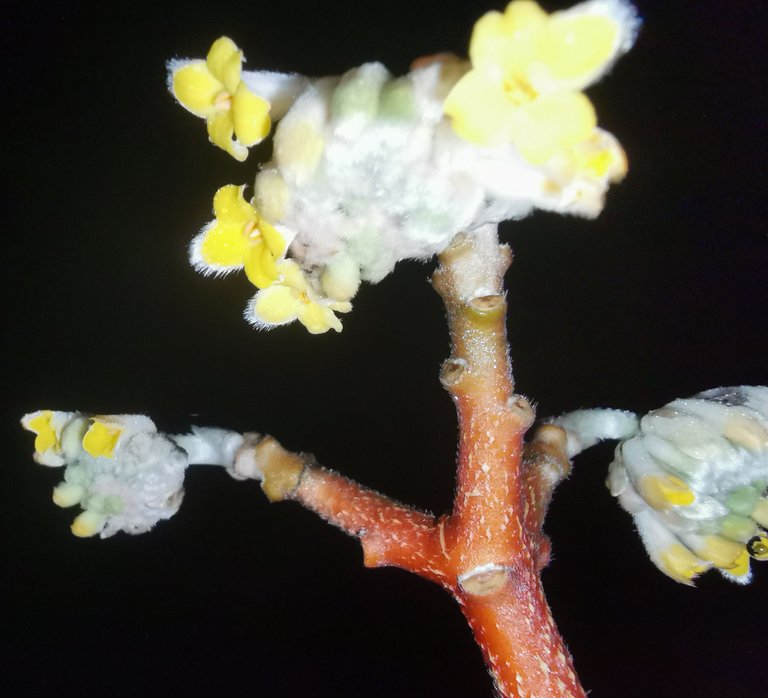
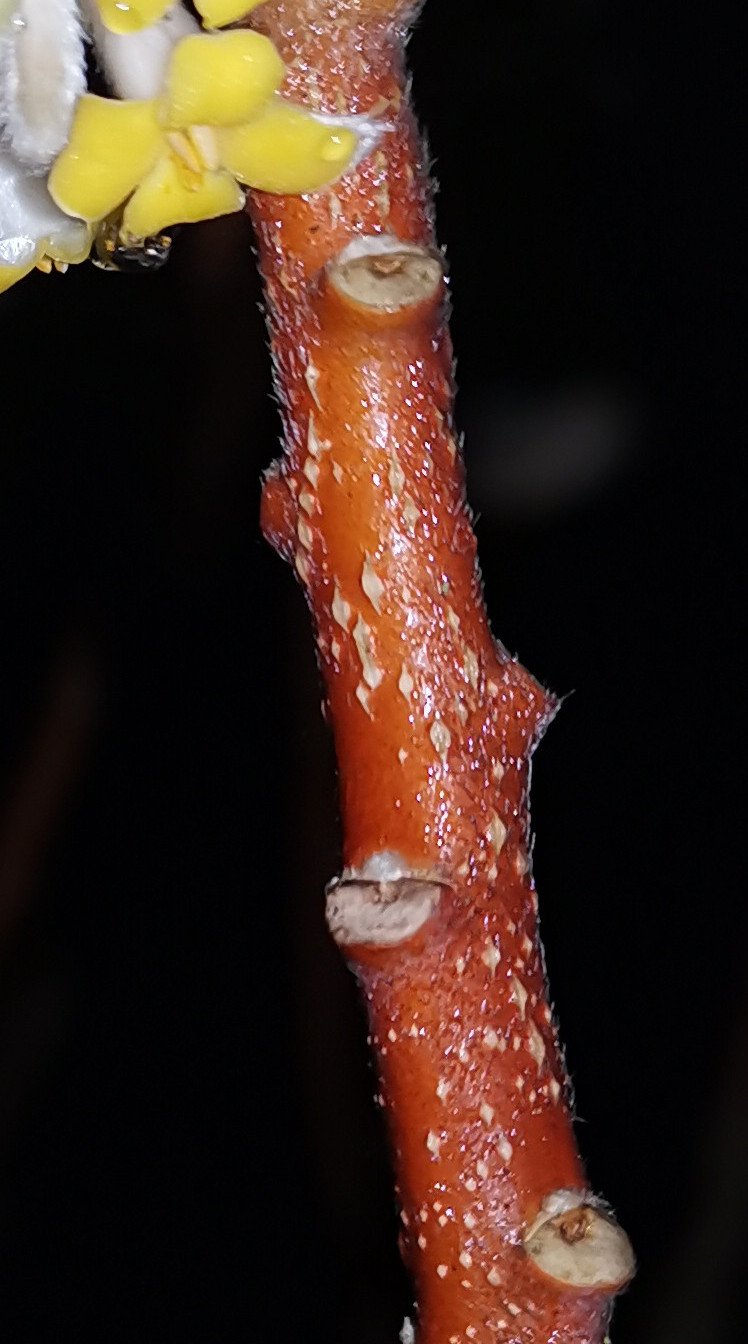
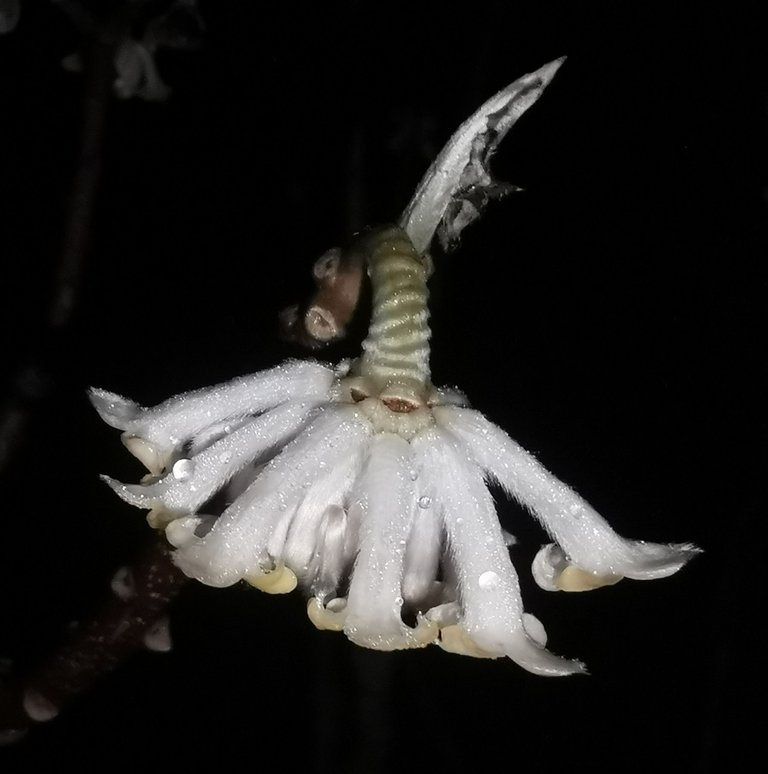
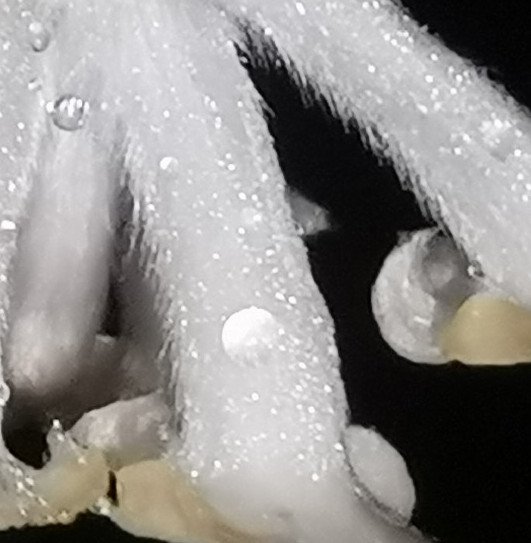
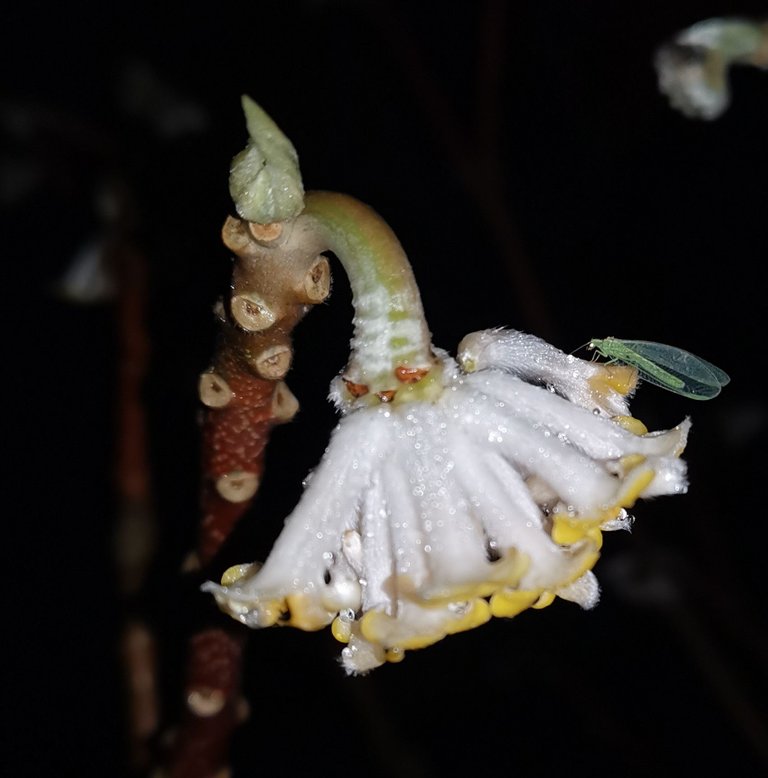
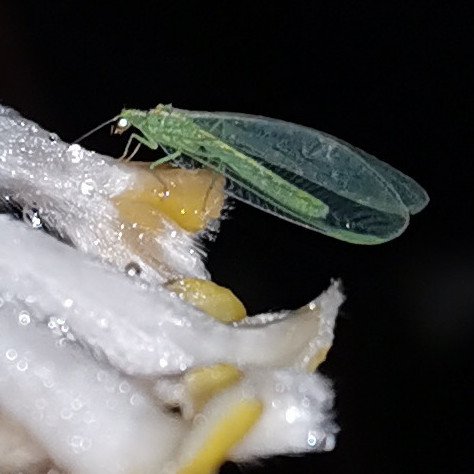
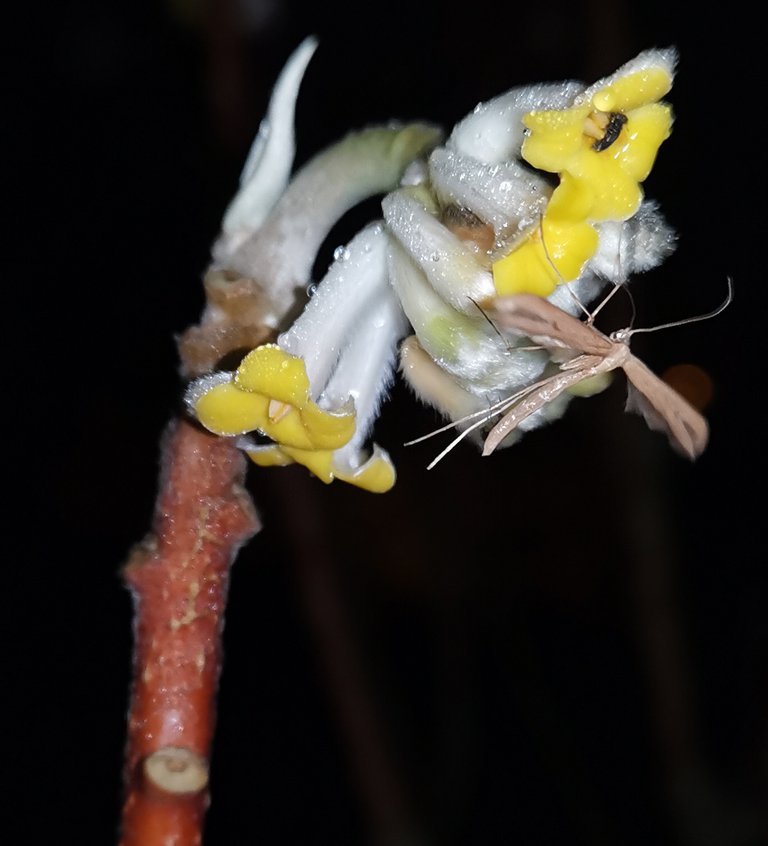
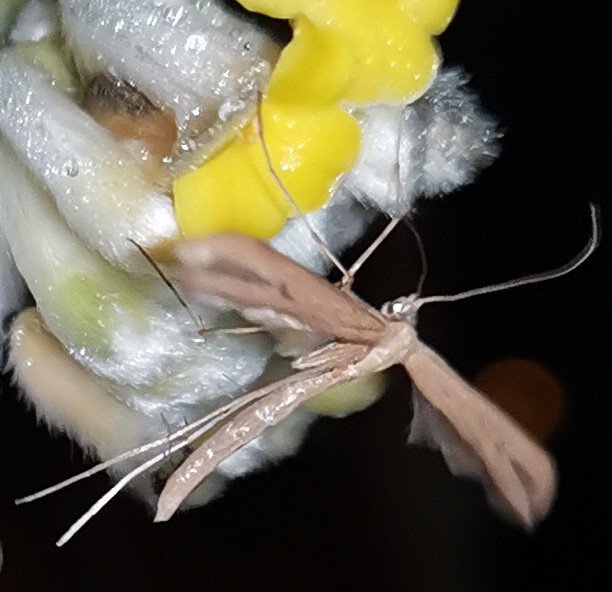
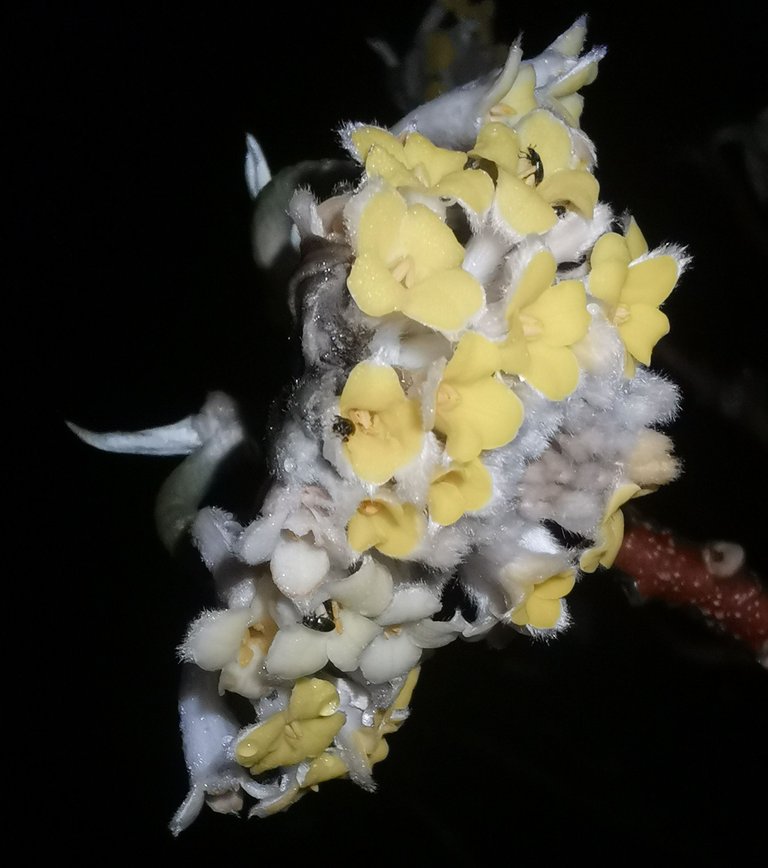
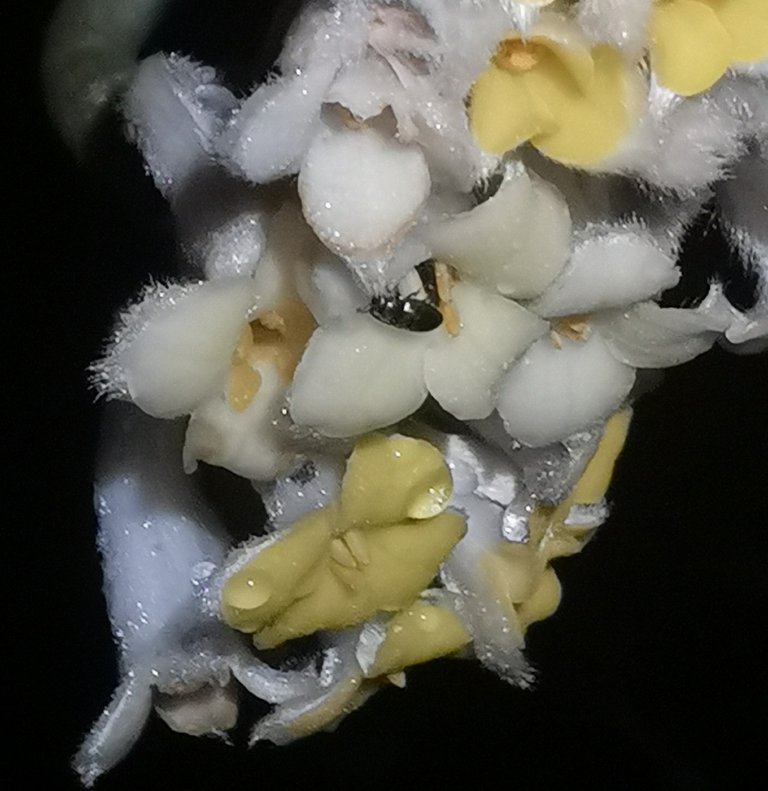
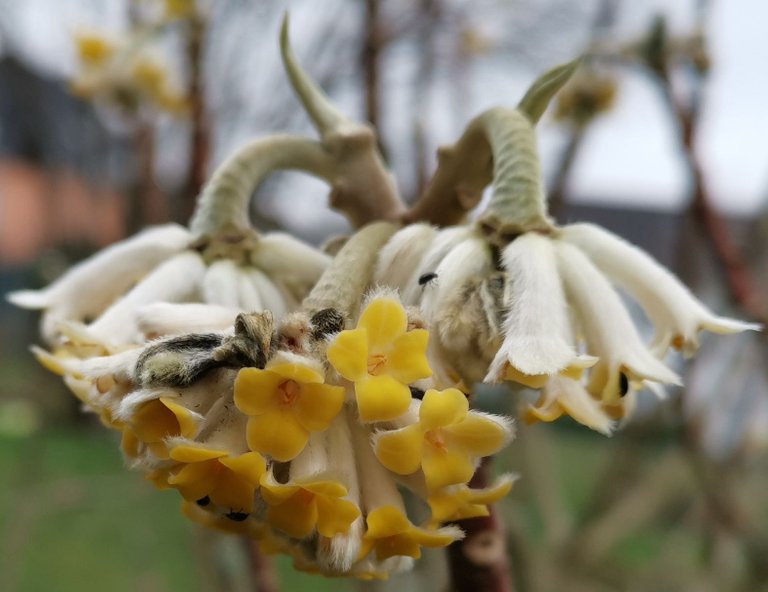

Winterharter Granatapfel???
Wo gibt´s denn sowas?
!BEER
Am winterhärtesten ist wohl die Sorte Punica granatum "Entekhabi Saveh".
Sieh dir mal die Links unten an:
Möglichkeit 1
Möglichkeit 2 (dort einfach per Mail nachfragen)
The plant is very beautiful with good benefits for insects. The flowers are gorgeous with bright yellow color. The frozen water makes the plant look more awesome and fascinating.
You had good eyes in finding these insects mostly at night time and took great shots of them. They are magnificent indeed.
Thanks so much for sharing. 😊
Actually, it's sweet nectar from the plant. That's what attracts lots of insects.
I absolutely agree with you, the sweet nectar from the plant attracts lots of insects. In the meantime, the frozen water on the flowers can attract my eyes as well.... Very gorgeous!😊
Really, there is no frozen water: imagine if temperatures were low enough to freeze water, then it would be way to cold for the insects to fly around and visit the paperbush.
It indeed might look like frozen water but in reality the plant excrets sweet secretions over the whole surface of their flowers and partly wood.
Many thanks for clarifying about the "frozen water".... Sorry for my mistakes. In my eyes, it really looks like frozen water.... 😊
Don't worry, no problem at all. :)
Nice that you like the pics!
That's really nice of you! 😊
Congratulations, @jaki01 Your Post Got 100% Boost.
@theguruasia Burnt 9.751 WINEX & We Followed That Lead.
Contact Us : CORE / VAULT Token Discord Channel
View or trade
BEER.Hey @jaki01, here is a little bit of
BEERfrom @janasilver for you. Enjoy it!We love your support by voting @detlev.witness on HIVE .